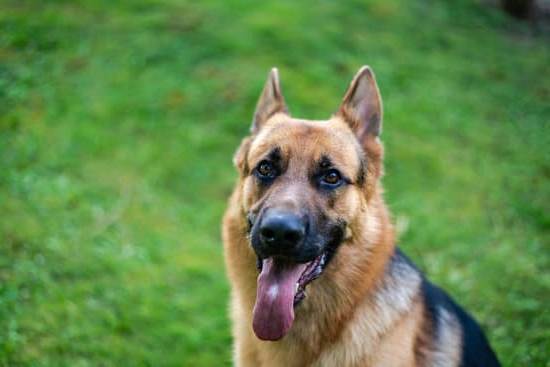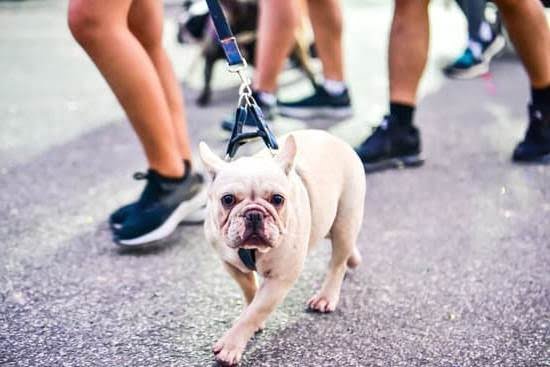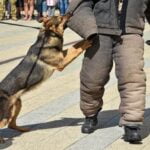Are you wondering how to train dog around strangers? Socializing your dog with strangers is an important aspect of their overall training and well-being. In this article, we will explore the importance of training your dog to be comfortable around unfamiliar people and provide tips on how to achieve this.
Many dog owners underestimate the significance of socializing their pets with strangers. However, a lack of exposure to new people can lead to fear, anxiety, and even aggression in dogs. It is crucial to address this issue early on to prevent potential behavioral problems and ensure that your dog feels comfortable and safe in various social situations.
By understanding your dog’s behavior around strangers and implementing basic training techniques, you can help them become more confident and relaxed when encountering new people. Whether it’s building confidence through gradual exposure or managing fear and aggression, there are several effective methods for training your dog to behave appropriately around strangers. Join us as we delve into the various aspects of training your dog around strangers and discover how you can effectively teach them proper social behavior.
Understanding Your Dog’s Behavior Around Strangers
Dogs are known for being loyal and loving companions, but their behavior around strangers can vary greatly. It is important for dog owners to understand how their furry friends may react when meeting new people in order to prevent any negative interactions.
First and foremost, it is crucial to recognize that a dog’s behavior around strangers can be influenced by a variety of factors such as past experiences, breed tendencies, and individual personality traits. Some dogs may exhibit excitement and enthusiasm when encountering unfamiliar faces, while others might display signs of fear or aggression.
To better understand your dog’s behavior around strangers, it is essential to pay close attention to their body language and vocalizations. Signs of stress or discomfort may include flattened ears, a tucked tail, raised hackles, trembling, barking, growling, or even lunging. By being attuned to these signals, dog owners can take proactive measures to address any issues before they escalate.
In addition to observing their outward behaviors, delving into the root causes of why a dog may act defensively or anxiously around strangers is beneficial. Understanding that fear often stems from lack of socialization or a negative past experience can assist in choosing the best approach for socializing them with new people. By grasping the underlying reasons behind such reactions, pet parents can tailor training methods accordingly to help their furry companions feel more at ease around strangers.
- Try engaging in activities that expose your dog to various sights and sounds.
- Socialize them at a young age through puppy classes and supervised interactions with friendly individuals.
- Seek professional assistance if your dog displays severe aggression or fearful behaviors towards strangers.
By comprehending the intricacies of canine behavior around strangers, pet owners can effectively address any issues related to fear or aggression in their beloved pets.
Basic Training Techniques for Socializing Your Dog
As a responsible dog owner, it is important to ensure that your furry friend is well-socialized and well-behaved around strangers. Basic training techniques play a crucial role in socializing your dog and creating positive interactions with people they may encounter. By implementing the right training methods, you can help your dog feel more comfortable and confident around strangers, ultimately reducing the likelihood of aggressive or fearful behavior.
One of the fundamental aspects of training your dog to socialize with strangers involves teaching them basic commands such as sit, stay, and leave it. These commands not only improve obedience, but also provide structure and guidance for your dog when encountering new people. Through consistent practice and positive reinforcement training, these basic commands can be ingrained into your dog’s behavior, allowing them to remain calm and controlled in the presence of strangers.
Positive reinforcement plays a significant role in encouraging good behavior when socializing your dog with strangers. Using rewards such as treats or verbal praise when your dog behaves appropriately around new people reinforces positive associations and builds their confidence. Additionally, avoiding punishment-based training methods when addressing fear or aggression towards strangers is essential, as this can exacerbate negative feelings and anxiety in your dog.
| Key Training Techniques | Importance |
|---|---|
| Teaching basic commands (e.g. sit, stay, leave it) | Provides structure and guidance for the dog |
| Positive reinforcement training | Reinforces positive associations with strangers |
| Avoiding punishment-based methods | Prevents exacerbation of negative behaviors |
Gradual Exposure to Strangers
When it comes to socializing your dog with strangers, gradual exposure is key. Introducing your dog to new people slowly can help them feel more comfortable and less anxious in unfamiliar situations. Here are some tips for safely exposing your dog to strangers:
- Start in a familiar environment: Begin by introducing your dog to friends or family members in a familiar and comfortable space, such as your home or backyard. This will help ease your dog into the process of meeting new people.
- Use positive reinforcement: When your dog reacts positively to meeting a stranger, be sure to reward them with treats and praise. This will help them associate meeting new people with positive experiences.
- Slowly increase exposure: As your dog becomes more comfortable with familiar faces, slowly start introducing them to new people in different environments. Take them on walks in busy areas or invite different individuals into your home.
By gradually exposing your dog to strangers in a positive and controlled manner, you can help them build confidence and reduce fear or aggression towards unfamiliar individuals.
It’s important to remember that every dog is unique, so the pace at which you expose them to strangers may vary. Pay attention to their body language and behavior during these introductions, and always prioritize their comfort and well-being. With patience and consistency, you can help your dog become more at ease around strangers.
Building Confidence in Your Dog
Understanding the Importance of Confidence
Confidence is an essential trait for a well-socialized dog, especially when it comes to interacting with strangers. A confident dog is less likely to show signs of fear or aggression, making them more reliable in various situations. Building confidence in your dog will not only help them feel more at ease around strangers but also in new environments and experiences.
Positive Reinforcement and Encouragement
One of the best ways to build confidence in your dog is through positive reinforcement and encouragement. When your dog behaves calmly and appropriately around strangers, make sure to reward them with treats, praise, or affection. This positive reinforcement will help your dog associate interactions with strangers as a positive experience, thus boosting their confidence over time.
Body Language and Tone of Voice
As a pet owner, your body language and tone of voice play a crucial role in how your dog perceives different situations. When introducing your dog to strangers, be mindful of your own body language and remain calm and assertive.
Dogs can pick up on their owner’s emotions, so maintaining a composed demeanor will help instill confidence in your furry friend during these encounters. Similarly, using a reassuring tone of voice can also provide comfort to your dog as they interact with new people.
Managing Fear and Aggression in Dogs
One of the challenges that dog owners may face when training their pets to be more social around strangers is managing fear and aggression. This can be a serious issue, as it not only affects the well-being of the dog, but also poses risks to others. Understanding how to address these behaviors is crucial for the success of your dog’s socialization.
Fear and aggression in dogs can stem from various reasons such as lack of socialization during puppyhood, past traumatic experiences, or simply a natural instinct to protect themselves. Identifying the underlying cause of these behaviors is the first step towards managing them effectively. Once you understand where your dog’s fear or aggression is coming from, you can tailor your approach to help them overcome it.
There are several techniques that can help manage fear and aggression in dogs when they are around strangers. For example, desensitization and counter-conditioning can help change your dog’s emotional response to certain triggers.
Through gradual exposure to strangers in a controlled environment, combined with positive reinforcement, you can teach your dog that meeting new people is nothing to be afraid of. It’s important to approach this process patiently and consistently, as rushing it can worsen your dog’s fear or aggression.
| Techniques for Managing Fear and Aggression | Description |
|---|---|
| Desensitization | This technique involves exposing your dog to strangers in a gradual and controlled manner. |
| Counter-Conditioning | The process of changing your dog’s emotional response towards strangers by associating their presence with positive experiences. |
By addressing fear and aggression in dogs around strangers with patience, consistency, and proper guidance, you can help improve your pet’s behavior and ensure their safety as well as the safety of those around them.
Training Tips for Specific Situations
Handling Strangers Approaching Your Dog on Walks
When strangers approach your dog on walks, it’s important to remain calm and composed. Dogs can pick up on their owners’ emotions, so staying relaxed will help your dog feel more at ease. Keep your dog on a short leash to maintain control and prevent any unwanted interactions. Additionally, you can use the “sit” or “stay” command to keep your dog from approaching the stranger until you give them the cue that it’s okay.
Training Your Dog to Behave Around Guests in Your Home
To train your dog to behave appropriately when guests come to your home, start by teaching them basic commands such as “sit” and “stay.” You can also designate a specific area in your home where your dog can go when guests arrive, such as a bed or crate. Using positive reinforcement, reward your dog for good behavior when people visit. Gradually increase the duration of time that they are expected to remain calm and well-behaved around guests.
Dealing With Aggressive Behavior Towards Strangers
If your dog exhibits signs of aggression towards strangers, it’s crucial to address this behavior immediately. Seek guidance from a professional trainer or behaviorist who can help you understand the underlying cause of the aggression and provide tailored training techniques. In the meantime, be proactive about managing situations that trigger aggressive behavior in your dog. This may involve using a muzzle or implementing safety measures to prevent any negative encounters with strangers while working on training and behavior modification.
Continuing Training and Maintenance
In conclusion, training your dog to be comfortable and well-behaved around strangers is essential for their well-being and the safety of others. It is crucial to understand that socializing a dog with strangers takes time, patience, and consistent effort. By following the basic training techniques, gradually exposing your dog to strangers, building their confidence, and managing fear or aggression, you can help your dog become a well-adjusted and sociable companion.
Continuing training and maintenance are key factors in ensuring that your dog’s behavior around strangers remains positive in the long term. Consistency is vital, so it is important to continue practicing basic commands and reinforcing positive behaviors regularly. Additionally, exposing your dog to new people on a regular basis can help maintain their comfort level around strangers.
Remember that every dog is different, and some may require more time and patience than others. It’s important to be understanding and empathetic towards your pet as you work on their socialization skills. With dedication and the right approach, you can help your dog feel at ease in the presence of strangers while keeping everyone safe and happy.
Frequently Asked Questions
How Do I Stop My Dog From Being Aggressive Towards Strangers?
To stop your dog from being aggressive towards strangers, it’s important to first understand why they are displaying this behavior. It could be due to fear, lack of socialization, or even a protective instinct.
Working with a professional dog trainer or behaviorist can help identify the root cause and develop a tailored plan to address the aggression. Additionally, gradually exposing your dog to new people in a controlled environment, using positive reinforcement, and teaching them alternative behaviors can also help reduce their aggression towards strangers.
How Do I Get My Dog to Stop Running Up to Strangers?
If your dog has a habit of running up to strangers, it’s essential to work on obedience training and impulse control. Teaching your dog solid recall and “stay” commands and using positive reinforcement when they listen can help them learn to keep their distance from strangers unless given permission to approach.
Consistency is key in reinforcing this behavior, so practicing these commands regularly in various environments is important for success.
How Do You Calm a Dog Down From a Stranger?
When trying to calm a dog down from encountering a stranger, start by staying calm yourself. Dogs can pick up on our emotions, so remaining relaxed can help de-escalate any anxiety or excitement in the dog. Keep them on a leash for control and use positive reinforcement when they exhibit calm behavior around strangers.
Over time, the goal is for the dog to associate meeting new people with positive experiences rather than feeling anxious or agitated. Gradual exposure and desensitization techniques may also be necessary if the dog has severe fear or anxiety towards strangers.

Welcome to the blog! I am a professional dog trainer and have been working with dogs for many years. In this blog, I will be discussing various topics related to dog training, including tips, tricks, and advice. I hope you find this information helpful and informative. Thanks for reading!





